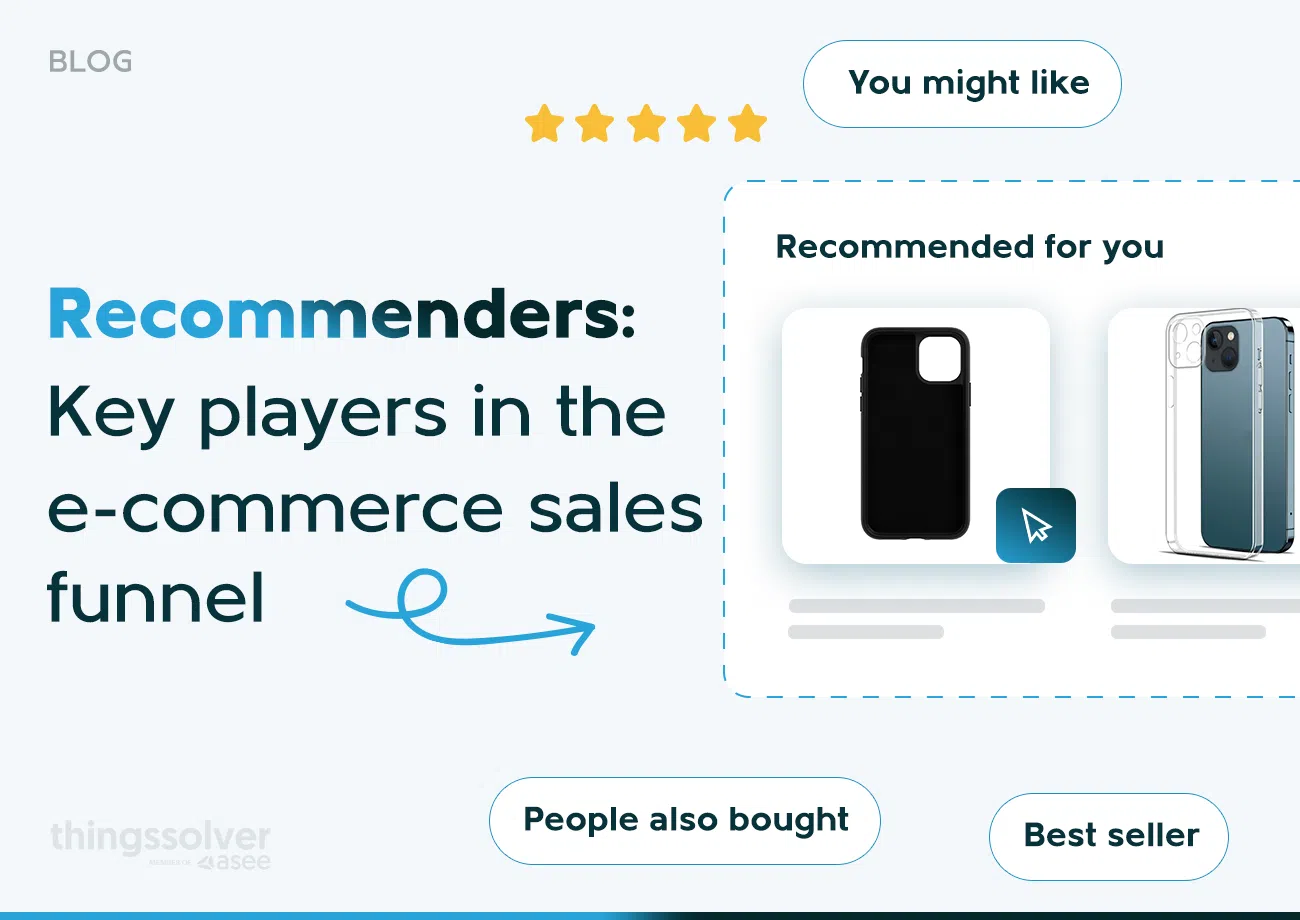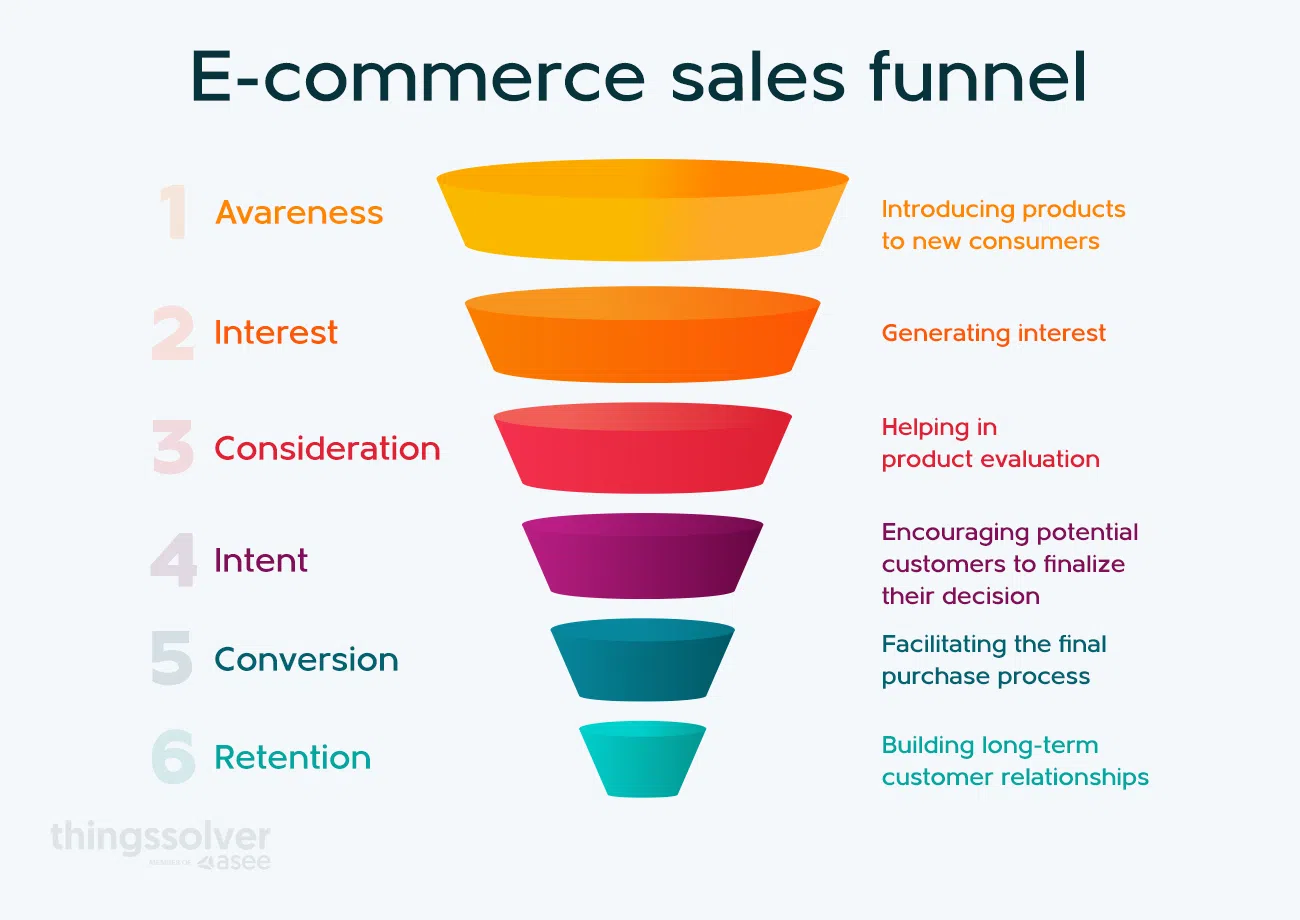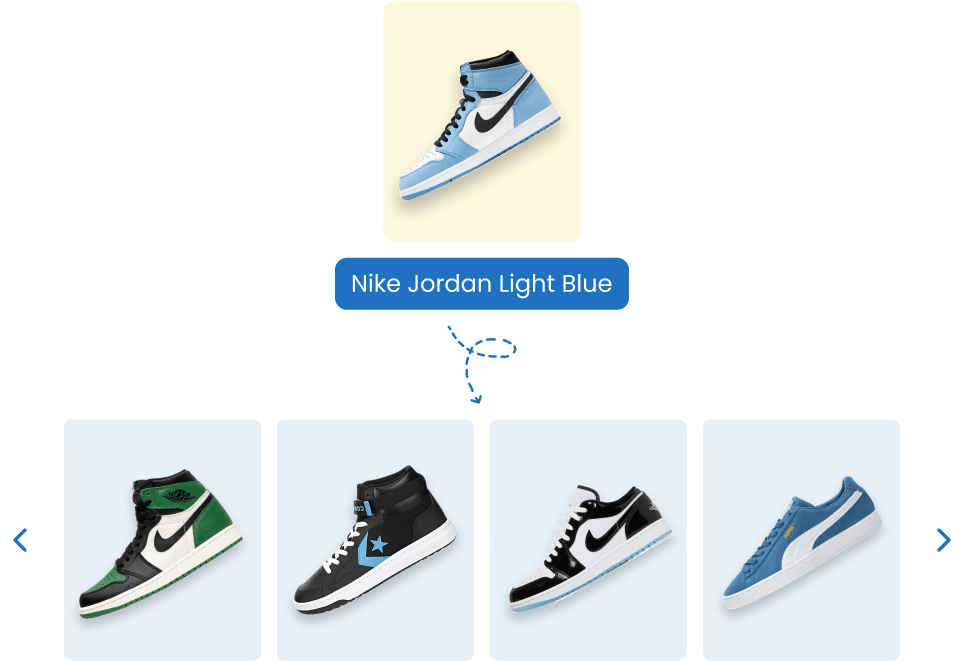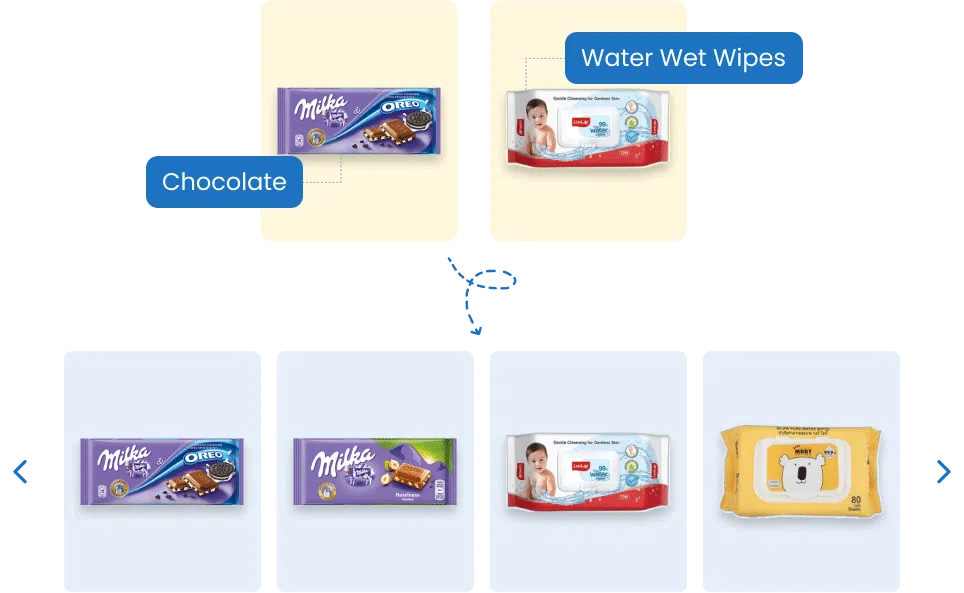What is conversational banking?
The financial industry is undergoing a digital revolution, with traditional methods of banking being replaced by faster, more efficient, and…
Read more17. 06. 2024.

In the past, we used to get recommendations from people we know, like our friends or family members. Sometimes even from salespeople.
Recommendations are a precious tool that can boost sales and drive revenue, but only when used right.
While word-of-mouth remains one of the best approaches to recommendations, with online shopping taking over, e-commerce stores must find new ways to recommend relevant products to their visitors.
This is where recommenders jump in!
Read on as we explain the role of recommenders in e-commerce and discuss how they can affect shoppers at critical stages in the e-commerce sales funnel.
Table of Contents
As you may know, a recommender system is a rule-based software tool that e-commerce stores can rely on to suggest items based on what customers do on their website.
You see, in the world of e-commerce, knowing what and when to recommend to your visitors and returning shoppers can keep people shopping and exploring more.
And since there are no friends and family to provide these recommendations, recommenders take over this role.
Thanks to the data they have access to, recommenders in e-commerce don’t just make generic recommendations. Instead, they use sophisticated algorithms to create highly relevant and personalized recommendations for each visitor.
This way, your e-commerce business can personalize the offerings by displaying relevant items at critical stages of the customer journey. When done right, this approach allows you to upsell or cross-sell, which can increase the average value order of your shoppers.
Before we go on to explore how recommenders in e-commerce work, let us quickly remind you of what types of recommenders you can use for personalization.
Collaborative filtering recommends items by identifying similarities between customers or items they buy. It doesn’t require explicit knowledge about the items or users.
Instead, it relies on the historical preferences or behaviors of users. We can distinguish two main types:
Content-based filtering suggests items by analyzing the characteristics of the items and matching them with the user’s preferences profile. It doesn’t require knowledge about other users’ preferences. Instead, it focuses on the characteristics of items and compares them with the user’s preferences.
Hybrid recommenders combine multiple recommendation approaches, such as collaborative filtering, content-based filtering, or even other techniques like knowledge-based or demographic-based recommendations.
The goal of hybrid recommenders is to leverage the strengths of each approach to provide more accurate and diverse recommendations.
Yes, there are different types of recommenders in e-commerce, but how do they personalize your shoppers’ experience?
First, they start collecting data on your shoppers’ preferences, behaviors, and interactions with different products. Then, they create detailed user profiles based on historical data, such as:
In addition to this, they also analyze products’ characteristics, such as genre, category, keywords, and metadata, to build item profiles.
Once these profiles are created, recommenders work hard to find similarities between users or items, or to match user profiles with item profiles. This process allows them to generate personalized recommendations tailored to each user’s preferences, past behavior, and context.
However, to keep refining and delivering relevant recommendations, recommenders rely on different feedback mechanisms, including explicit feedback (ratings) and implicit feedback (clicks and purchases).
They keep getting better at suggesting things by constantly collecting data, analyzing it, and using feedback. This makes their recommendations more accurate and relevant, which improves the overall user experience.

Recommenders in e-commerce play a crucial role in managing the different stages of the e-commerce sales funnel. The stages of the e-commerce sales funnel include:
Let’s see how recommenders impact each stage of the e-commerce sales funnel.
This is when people first learn about your brand.
Recommenders help by showing your products to new customers through ads, blog posts, social media, or referrals. At this stage, it’s important that you make a great first impression and attract attention.
During the Interest stage, potential customers start to engage more with your brand.
To help you out and spark their curiosity, recommenders can highlight popular products or related items. This might involve subscribing to newsletters or following on social media, where you share more about what you offer.
Here, customers compare your products with others, even your direct competitors.
During this stage, recommenders can show detailed product features, reviews, and comparisons to help them decide. They might watch videos, read blog posts, or chat with customer support to gather more information about your offer.
Now, customers are seriously thinking about buying one or more of your products.
Recommenders can suggest complementary products or offer discounts to encourage them to move on. Actions like adding items to the cart or exploring payment options show they’re ready to buy.
This is when the purchase happens.
Recommenders ensure a smooth checkout by showing related items or upselling products that enhance the main purchase. It’s crucial to provide a seamless and secure buying experience to avoid cart abandonment.
After the purchase, the goal is to keep customers coming back.
Recommenders help by suggesting products based on past purchases or offering loyalty rewards. Engaging content and excellent customer service build long-term relationships.
For many big brands, using recommenders in e-commerce is already an everyday thing.
For example, Amazon’s recommendation engine suggests products based on what you’ve browsed and bought before. This helps their shoppers find things they might like and encourages them to buy more.
Also, Netflix uses personalized content suggestions to recommend movies and shows based on what you’ve watched before. This makes it easier for viewers to find new content they’ll enjoy.
Finally, Spotify’s curated playlists suggest songs and artists based on your listening habits. This helps users discover new music they’re likely to love.
As you can see, e-commerce personalization is already here and you should embrace it, too!
The beauty of using recommenders in e-commerce lies in their versatility.
As an e-commerce business, you can use them to experiment with different tactics and come up with the most effective suggestions for your shoppers.
We’ve put together a list of recommendation tactics that you can try before you pick those that work best for your business.
Including a ‘Recommended for you’ section is a popular strategy that relies on the shopper’s browsing history to make relevant recommendations. To add another level of personalization, you should address the customer by their name. For example, “Jackson, we think you’ll like these products.”
These recommendations show items that are often purchased together. This tactic is known to boost the average order value (AOV) because it encourages your customers to buy more items in one go.
These recommendations show products that other customers have purchased along with the item another shopper is looking at. This provides relevant product options that the other customer might also like.

This tactic displays items similar to the one the shopper is currently viewing. It’s effective because your shoppers can see a full range of product lines, helping them choose the one that best suits their needs and preferences.
Showcase your best-selling products on the homepage or other popular pages. This grabs visitors’ attention right away and acts as social proof, making it easier for them to decide to purchase.
Introduce visitors to enticing products they might not have considered. This can highlight new or unique items that grab attention or emphasize your most popular products.

Allow shoppers to view their purchase history and suggest related items. For example, you can always display a message like: “Since you bought this item, you may also like this product.”
Bundle products that are frequently purchased together and offer a special discount for that bundle. This might encourage your shoppers to buy more than one item at once.
Feature products with the highest ratings. You can take it a step further by including those with the best customer reviews to build trust and attract more buyers. People sometimes rely on social proof to make purchases, especially with products they haven’t bought before.
Suggest equipment or accessories for products that require them. For example, if someone buys a camera, recommend a memory card and a protective case.
Improve your digital marketing efforts by personalizing email campaigns with product recommendations. Send emails to website visitors and customers based on their recent purchase history. You can also add messages such as: “Since you bought X, you might like Y.”
Create special events and discounts for your returning customers to encourage them to return to your site and make more purchases.
Recommenders in e-commerce play a big role, helping you boost sales and keep customers happy by suggesting products they’ll love. They make shopping easier and more personalized, which keeps customers coming back.
Looking ahead, recommenders get even better with advancements in AI and machine learning. We’ll see smarter, more accurate recommendations, real-time updates, and cool new features like virtual and augmented reality integrations.
If you need help adding a recommender system to your business, feel free to contact Things Solver. We’re here to make the process simple and effective, so you can start seeing the benefits right away.
Send us an email at ai@thingsolver.com or simply book a free demo and let’s get things started!
The financial industry is undergoing a digital revolution, with traditional methods of banking being replaced by faster, more efficient, and…
Read moreYou’re running a business, constantly looking for ways to cut costs, boost efficiency, and increase revenue. But here’s the harsh…
Read moreAgentic AI will transform industries, but with one important exception — without consolidated data, even the most sophisticated AI systems…
Read more